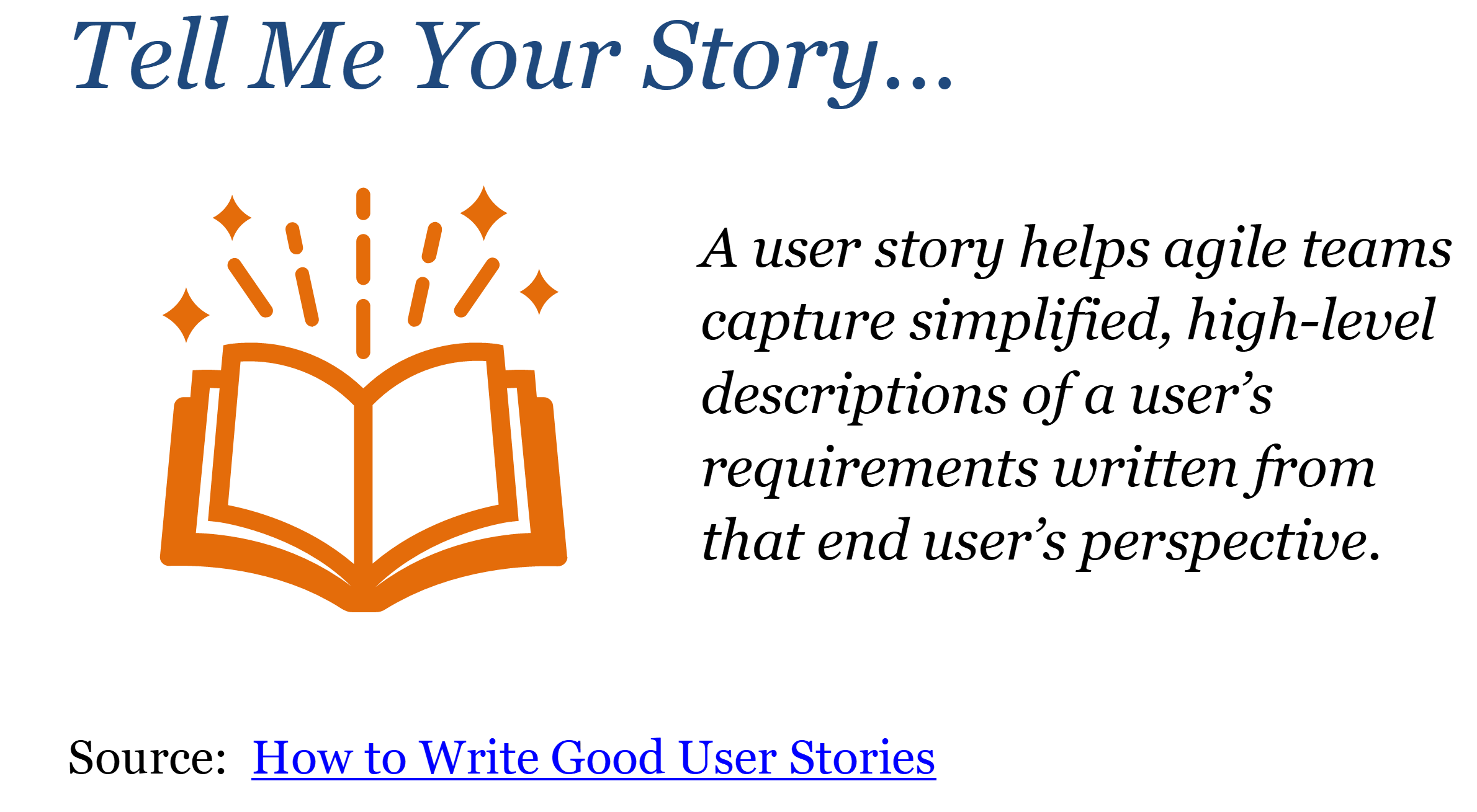In marketing, best practice is to understand your customer to make an emotional connection leading to brand loyalty. In sales, the customer relationship is paramount; lose that trust and you lose business. In project management, the customer’s needs should be paramount, but sadly are often lost in the cacophony of voices from various stakeholders. Project Managers can enjoy more successful project outcomes and yes even “repeat business” when they put the user first. The User Story tool is a great way to ensure all team members have a shared understanding of the work at hand.

Free Emotional Intelligence PDU
Develop your Emotional Intelligence as well as your team members in this Free PDU Course!
User Story Defined
The “User Story” is most commonly associated with the Agile project management methodology. Using input from the customer (or the product owner, as representative of the customer’s voice), the team breaks work into functional increments called “User Stories.” Rather than a generic statement that summarizes the overall project effort, each increment, or User Story, provides a clear line of sight into the what and why of a piece of work. Ideally, each implemented User Story contributes to the overall value of the product.

The User Stories need to be accessible to the team members, whether in a shared office space or working virtually. To that end, teams can use index cards or sticky notes to post User Stories in a shared physical space or leverage a project management software that mimics the “post-it” nature of focused information that can be organized and moved as needed.
User Story Creation
No special training is needed to write a User Story, but for it to help your project team, the stories should reflect a proven three-part formula: Who, What, Why. You can think of it as an equation:
As a <type of user>, I want <some feature> so that <some reason>
For others, it may help to think of it as more of a fill-in-the-blank statement:
As a someone
I want something
so I can have a value.
What all User Stories must have is a focus on the Customer. As in Marketing and Sales, Project Management is also about creation of value for the customer. The User Story is a means to keep that value at the front of all work.
|
User Story Answers Three Vital Questions | |||
|
WHO |
As a <type of user> |
Who is the user? |
As a someone |
|
WHAT |
I want <some feature> |
What are we building? |
I want something |
|
WHY |
so that <some reason> |
Why are we building it? |
so I can have a value. |
User Stories should be “digestible” – a single thought built on the value to the customer. The ScrumDesk provides great tips for effective User Stories including:
- Remove unnecessary words that do not add information value.
- Identify the user explicitly. (“User” does not capture who work if for)
- Keep it simple. More words do not add clarity.
- Keep it small so that it can realized by 3-5 days including tests, documentation, etc.
The challenge of writing User Stories is not in identifying the value (hopefully!) but in keeping it a clean, straightforward, and simple as possible.
Studying for the PMP Exam?
User Story in Project Management Context
Much has been written about User Stories as a tool within the Agile methodology. In the very informative “Agile project management with formal requirements and test case management” conference paper available on the Project Management Institute site, author McKenrick states:
- Agile product development with Scrum is based on completing a set of User Stories within a time-box called a Sprint
- A User Story belongs to zero or one Sprint
- A User Story has attributes such as Title and Description
- The state of the User Story will normally transition from Not Started to In Progress to Done.
- All User Stories are required to have a Design Review before it is done and a Done Review after it is done.
It is important to note that User Stories are not a Feature nor a Task. User Stories bring forward the context and perspective of the human customer into the development cycle.
Learn More
Regardless of your role within an Agile project environment, it is critical to understand the purpose of User Stories and how they fit within the overall workflow. In the Agile Fundamentals workshop from the Project Management Academy, you will learn how to write better requirements using user stories and acceptance criteria that best represent the voice of the customer.
Upcoming PMP Certification Training – Live & Online Classes
| Name | Date | Place |


 New Horizons
New Horizons
 Project Management Academy
Project Management Academy
 Six Sigma Online
Six Sigma Online
 TCM Security
TCM Security
 TRACOM
TRACOM
 Velopi
Velopi
 Watermark Learning
Watermark Learning
 Login
Login




 New Horizons
New Horizons
 Project Management Academy
Project Management Academy
 Velopi
Velopi
 Six Sigma Online
Six Sigma Online
 TCM Security
TCM Security
 TRACOM
TRACOM
 Watermark Learning
Watermark Learning